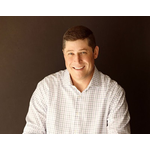Activity
Activity
-
Nathan McDonald posted a link
Atossa Genetics Launches ForeCYTE Breast Health Test(SM) for Breast Cancer Risk Assessment
Atossa Genetics, Inc., a health care company developing and commercializing a comprehensive set of innovative, proprietary breast health evaluation products and services, today announced the first phase of the commercialization of its new, FDA-cleared ForeCYTE Breast Health Test(SM). This new... see more Atossa Genetics, Inc., a health care company developing and commercializing a comprehensive set of innovative, proprietary breast health evaluation products and services, today announced the first phase of the commercialization of its new, FDA-cleared ForeCYTE Breast Health Test(SM). This new test is initially available under a Field Experience Program for select customers in the U.S. A national roll out of the test is planned for 2012. -
Nathan McDonald posted a link
Keiretsu Forum expands its wings
What started as a single chapter in the East Bay has now grown to more than 850 members on three continents. This week Williams announced that the Keiretsu Forum's 23rd chapter will be formed in Turkey. -
Nathan McDonald posted a link
PakSense Named 2011 Idaho Innovative Company of the Year
PakSense was named Innovative Company of the Year during the sixth annual Idaho Innovation Awards, presented during the Idaho Technology Council’s annual Hall of Fame Celebration. The state’s only innovation awards program, the Idaho Innovation Awards recognize innovative accomplishments... see more PakSense was named Innovative Company of the Year during the sixth annual Idaho Innovation Awards, presented during the Idaho Technology Council’s annual Hall of Fame Celebration. The state’s only innovation awards program, the Idaho Innovation Awards recognize innovative accomplishments throughout the state. Nominations were judged by a selection committee consisting of leaders from Idaho’s business, technology and academic communities. -
Nathan McDonald posted a link
Strategic News Service Welcomes Keiretsu Forum as Alliance Partner
Strategic News Service welcomed Keiretsu Forum as an Alliance Partner this week. The partnership represents a new level of support and interaction between the two organizations, as they seek to support and promote world-changing companies around the world as they make the transition from... see more Strategic News Service welcomed Keiretsu Forum as an Alliance Partner this week. The partnership represents a new level of support and interaction between the two organizations, as they seek to support and promote world-changing companies around the world as they make the transition from start-ups to thriving enterprises. -
Nathan McDonald posted a link
CrowdCompass lands $1.3M from Oregon, Wash. angel funds
Mobile apps startup CrowdCompass has raised $1.3 million in a venture capital round, including investors from Keiretsu Forum -
Nathan McDonald posted a link
Keeping it Real
Simulated businesses with make-believe P&L statements have no place in Professor John Castle’s “Creating a Company” course at the UW Foster School of Business. Here, student businesses are awarded real money and expected to turn a profit in 10 weeks. -
Nathan McDonald posted a link
Hydrovolts Named a Global Innovator in the LAUNCH: ENERGY Challenge
NASA, USAID, The U.S. Department of State, and NIKE identified Hydrovolts for its innovative approach to society's most pressing energy challenges. -
Nathan McDonald posted a link
SEC Adopts Revised “Accredited Investor” Standard
The Securities and Exchange Commission (the “Commission”) adopted revisions to the “accredited investor” standard that exclude the value of a person’s primary residence for purposes of determining whether that person qualifies as an accredited investor on the basis of having a net worth in... see more The Securities and Exchange Commission (the “Commission”) adopted revisions to the “accredited investor” standard that exclude the value of a person’s primary residence for purposes of determining whether that person qualifies as an accredited investor on the basis of having a net worth in excess of $1 million. -
Nathan McDonald posted a link
Keiretsu Forum Angel Investors and Naxuri Capital Launch Technology and Fashion Accelerator
Ahead of the Fashion is an accelerator program for technology start-ups in the consumer, fashion, and retail industries. Join us at the inaugural event on January 10, 2012 in San Francisco. Contact Sonja Markova, Managing Director of Keiretsu Forum, at 415-573-0751 for more information or email... see more Ahead of the Fashion is an accelerator program for technology start-ups in the consumer, fashion, and retail industries. Join us at the inaugural event on January 10, 2012 in San Francisco. Contact Sonja Markova, Managing Director of Keiretsu Forum, at 415-573-0751 for more information or email af@keiretsuforum.com


